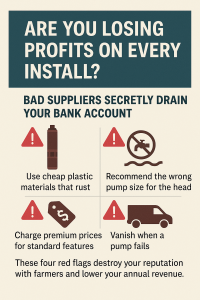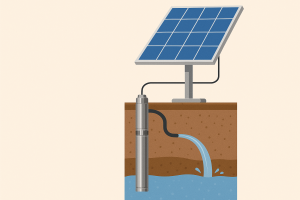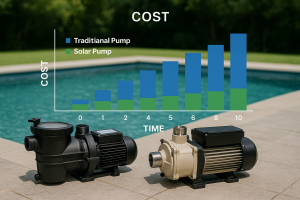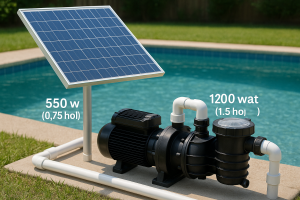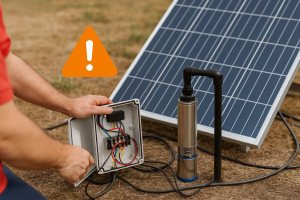Struggling to get water in remote areas without power? This makes irrigation difficult and expensive. A solar well pump provides a simple, reliable solution using only the sun.
A solar well pump is a water pump system powered directly by solar panels. It is designed to lift water from deep wells or boreholes, making it perfect for irrigation, livestock watering, and providing drinking water in off-grid locations without needing electricity or fuel.
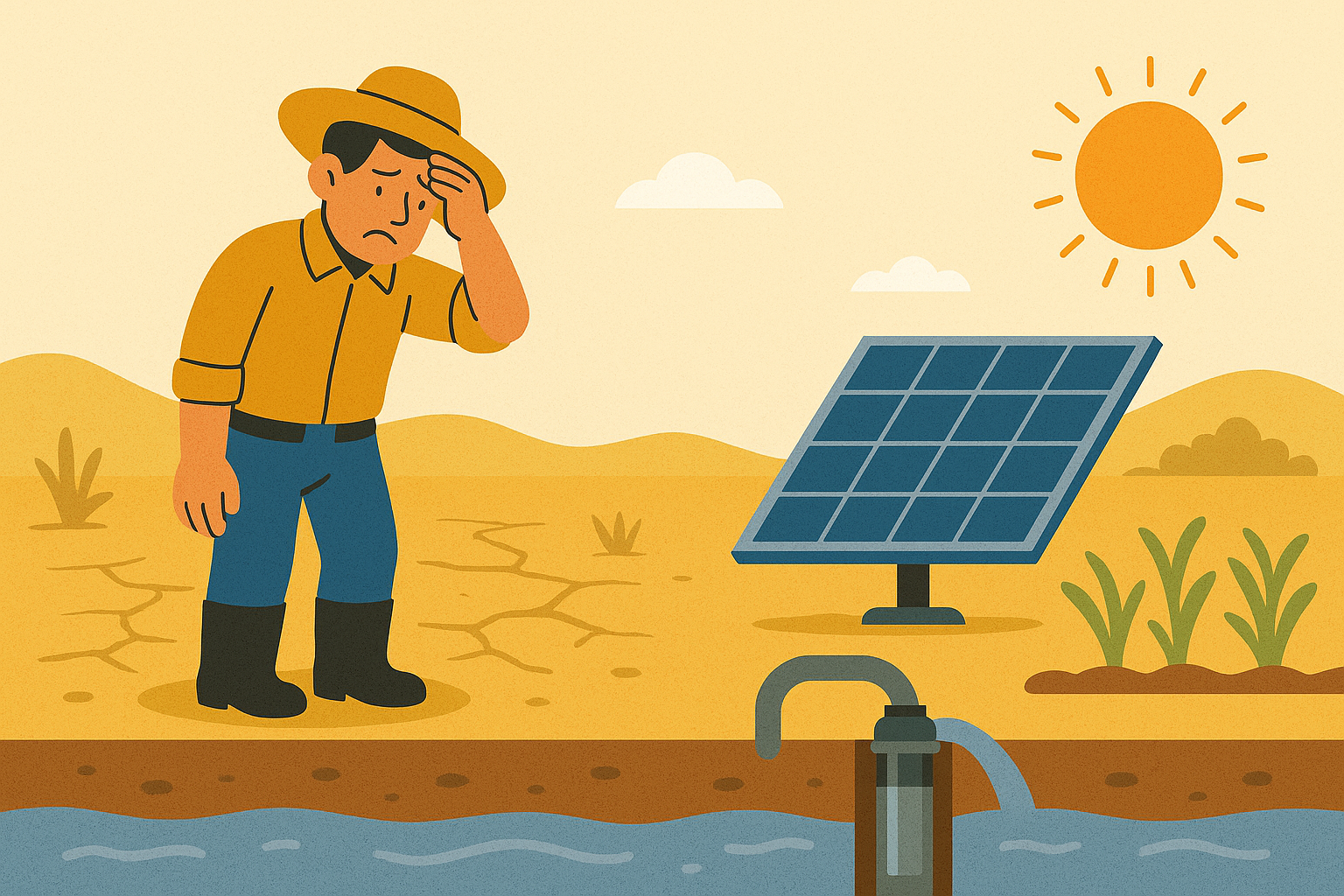 ("Solar Well Pump System")
("Solar Well Pump System")
I've spoken with many distributors, like Daniel from South Africa, who work with farmers in remote areas. Their biggest challenge is reliable water access. Traditional pumps need grid power or diesel, which are often unavailable or costly. This is where I see our solar pumps making a real difference. They offer a self-sufficient and long-term solution to a very old problem. Let's explore how they work and if they are the right choice for your business.
How do solar well pumps work?
You need to pump water, but there's no grid connection. Running generators is expensive and requires constant refueling. We offer a system that powers itself using free sunlight.
A solar well pump works by converting sunlight into DC electricity using solar panels. This power goes to a controller, which manages the energy and runs the pump motor. The motor then drives the pump to lift water from the well to the surface.
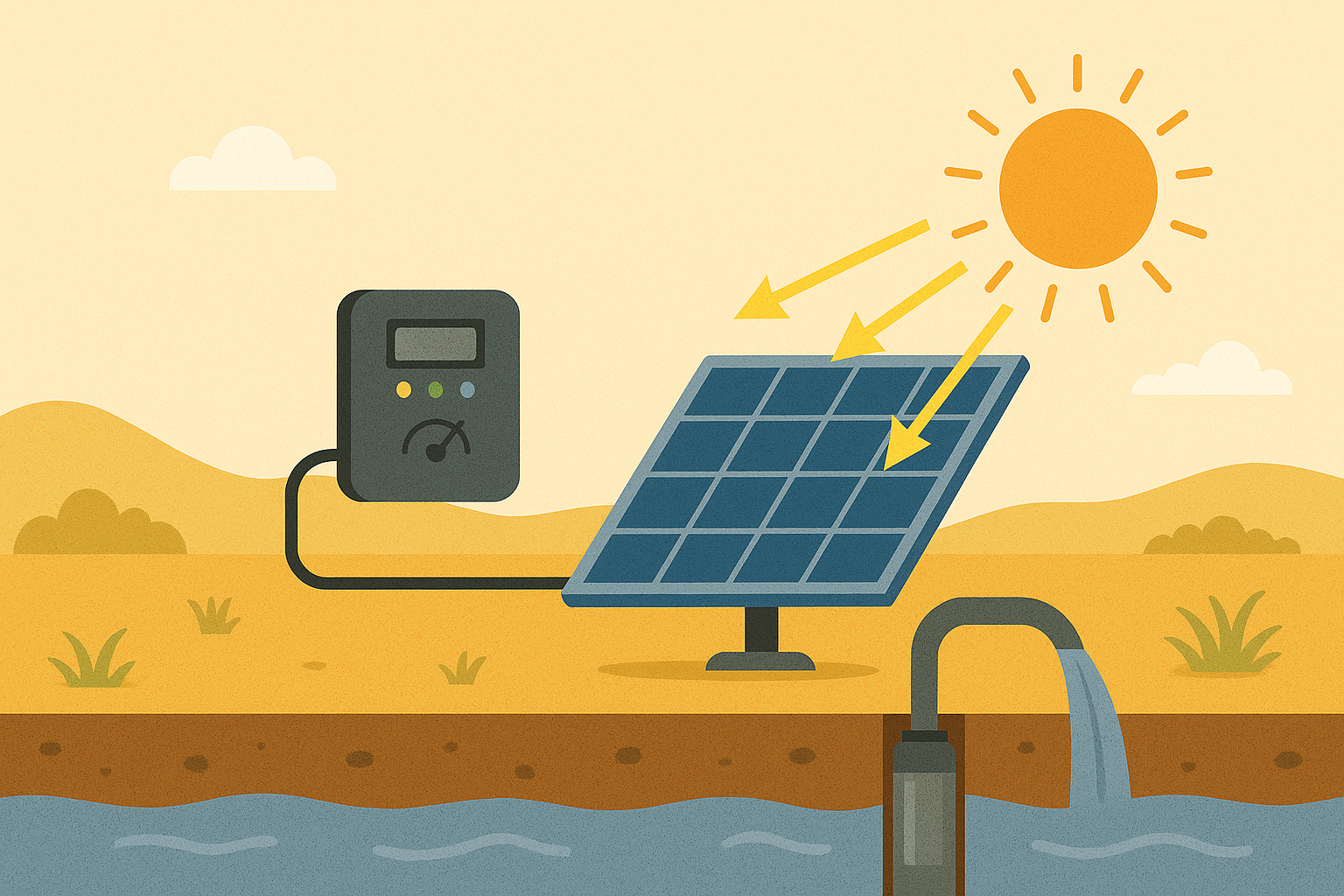 "Solar Well Pump Diagram"
"Solar Well Pump Diagram"
Let's break down the process. It's simpler than you might think. From my experience at HYBSUN, I know that a reliable system has three main parts. Understanding these parts helps you see why this technology is so effective, especially for distributors whose customers depend on consistent performance.
Key Components of a Solar Pumping System
- Solar Panels: These are the power source. They capture sunlight and create DC electricity. The number of panels you need depends on the pump's power and how much water you need to move.
- Solar Pump Controller (Inverter): This is the brain of the system. It takes the DC power from the panels and adjusts it to run the pump efficiently. Our controllers use MPPT (Maximum Power Point Tracking) technology. This means they get the most power possible, even on cloudy days. They also protect the pump from things like running dry or voltage spikes.
- The Pump Unit: This is the part that does the work. It sits inside the well. We use brushless DC motors in our pumps. They are more efficient and last much longer than standard AC motors because they have fewer parts that can wear out.
| Component | Function | Why It Matters for a Distributor |
|---|---|---|
| Solar Panels | Generate DC electricity from sunlight. | The foundation of the system's power. |
| MPPT Controller | Optimizes power from panels to the pump. | Ensures maximum water output and protects the system. |
| Brushless Pump | Moves the water using the optimized power. | High efficiency and long life mean happy customers. |
Are solar well pumps any good?
Worried that a new technology might not be reliable? You need a solution that works every day without constant fixing. Our solar pumps are built for durability and performance.
Yes, solar well pumps are very good, especially for off-grid applications. They are extremely reliable, have low operating costs, require minimal maintenance, and are environmentally friendly. They provide a dependable water supply using only the power of the sun.
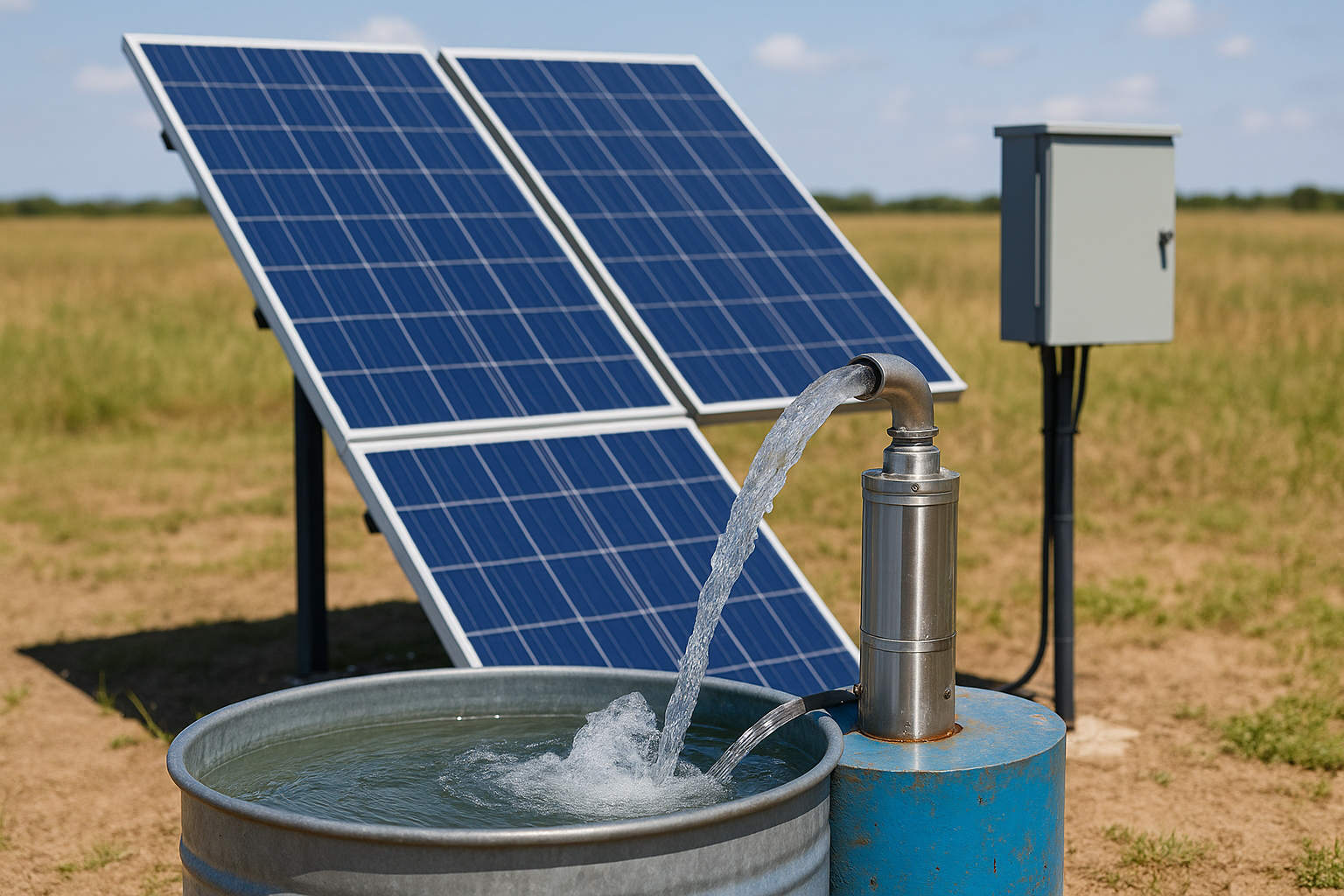 "Durable Solar Submersible Pump"
"Durable Solar Submersible Pump"
When I talk to buyers, their main concern is always reliability. A pump that fails can be a disaster for a farm. I always tell them to look at the motor. Traditional pumps often use brushed motors that wear out. At my factory, we build our solar pumps with permanent magnet synchronous motors (PMSM). These are brushless motors. This means there are no brushes to replace, so the pump has a much longer lifespan and stays highly efficient over time. This is a huge selling point for distributors. Your customers get a product that just keeps working, which builds trust in your brand.
Comparing Pump Technologies
To see the real value, let's compare solar pumps to the alternatives.
| Feature | Solar Well Pump (HYBSUN) | Diesel Pump | Grid-Connected Electric Pump |
|---|---|---|---|
| Operating Cost | Nearly zero. | High (fuel, maintenance). | Moderate (electricity bills). |
| Reliability | Very high, automatic operation. | Moderate, needs refueling. | Depends on grid stability. |
| Maintenance | Very low (brushless motor). | High (engine service). | Low to moderate. |
| Lifespan | Long (10+ years). | Moderate (5-10 years). | Long (10+ years). |
| Location | Anywhere with sun. | Anywhere, but needs fuel access. | Only where grid is available. |
For a distributor like Daniel in South Africa, these benefits are clear. He can offer his customers a way to reduce their biggest expense—fuel—and give them a water source they can count on.
What are the disadvantages of a solar water pumping system?
You might think a solar pump is a perfect solution. But you worry about cloudy days or pumping at night. These are valid concerns that every buyer should consider.
The main disadvantages are the high initial investment cost and the dependence on sunlight. The pump won't work at night or on very overcast days without a battery storage system, and the upfront cost is higher than for traditional pumps.
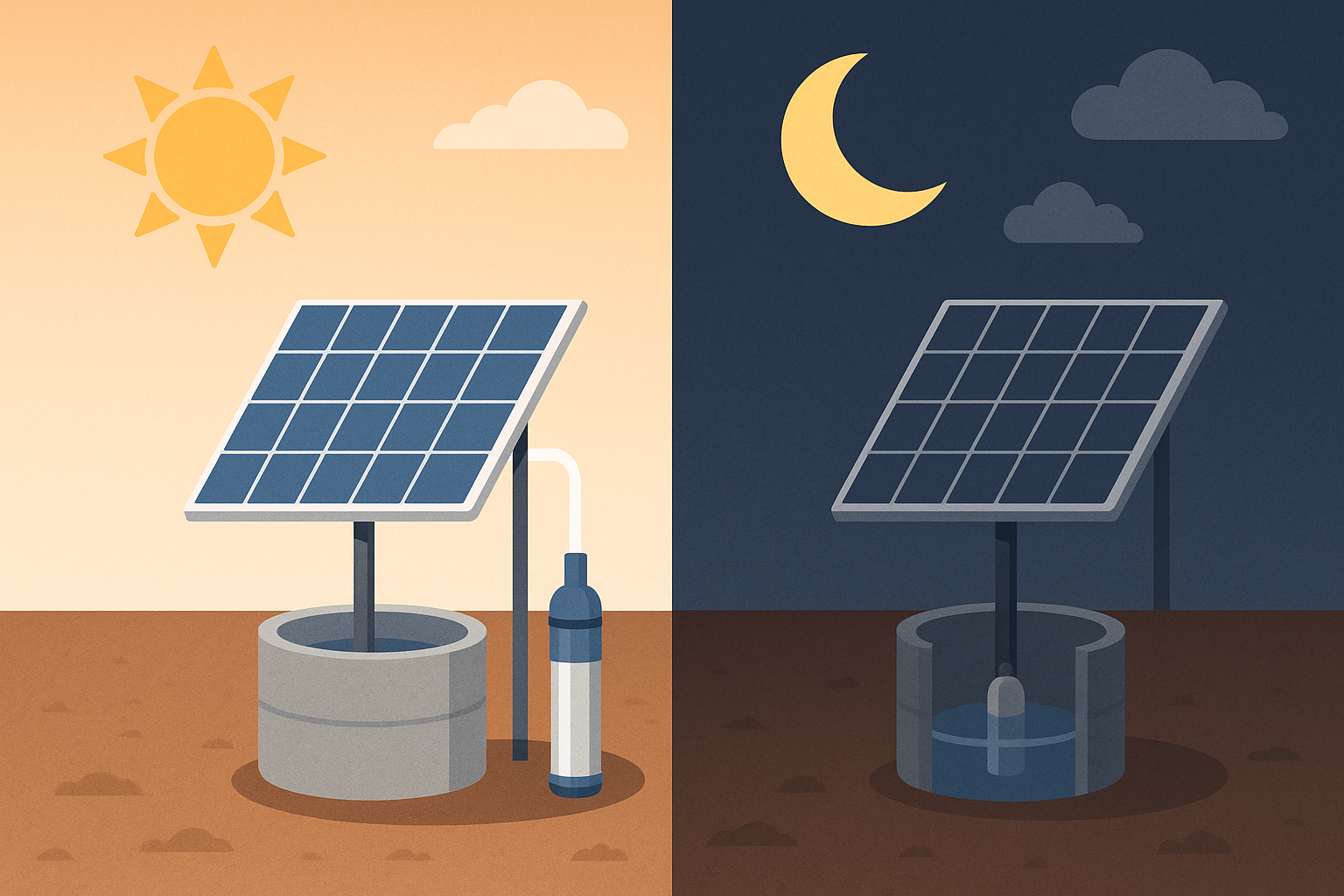 "Water Storage Tank for Solar Pump"
"Water Storage Tank for Solar Pump"
I believe in being honest about our products' limitations. It builds trust. Yes, the initial cost is higher. You are buying a complete power and pumping system. And yes, it needs sunlight. But we have designed solutions for these challenges. For many of my clients, these disadvantages are manageable trade-offs for long-term energy independence. The key is to plan the system correctly. Instead of thinking of it as a disadvantage, I see it as a different way of managing water. You don't pump on demand; you pump when the sun is available and store the water for later. This simple change in thinking makes all the difference for successful long-term use.
Managing the Drawbacks
- High Initial Cost: While the upfront price is more than a standard pump, the total cost of ownership is much lower. There are no fuel bills and very few maintenance costs. For a business, the return on investment is often seen in just a couple of years. We also offer wholesale pricing and bulk discounts to our distributors to make the economics even better.
- Dependence on Sunlight: This is the most obvious limitation. The solution is simple: a water tank. The system pumps water into a large storage tank during sunny hours. The farm then uses this stored water whenever it's needed, day or night. This is much cheaper and more reliable than using batteries. For critical applications, our hybrid AC/DC inverters can switch to grid or generator power as a backup.
How much does a solar well pump cost?
You need a clear budget for your projects. The price of solar pumps can seem confusing with so many parts. We can help you understand what drives the final cost.
A complete solar well pump system can cost from a few hundred to several thousand dollars. The price depends mainly on the pump's power, the required water depth (head), the number of solar panels needed, and the controller's features.
 "Complete Solar Pump Kit"
"Complete Solar Pump Kit"
As a factory, we handle inquiries from all over the world, from small farms in Uganda to large agricultural projects in the United States. The needs are always different, so the cost varies. It is not just about the pump. It's about the entire system. A small pump for livestock might only need two solar panels. A deep well pump for large-scale irrigation in Thailand might need twenty panels or more. I always advise my distributors to focus on the customer's specific needs first. Once we know the required water volume and well depth, we can design a system with the right components and provide very accurate wholesale pricing.
Factors That Determine System Cost
Understanding these factors helps you explain the value to your customers. It's not just a price, it's an investment in a specific level of performance.
| Cost Factor | Why It Matters | Example Impact on Price |
|---|---|---|
| Pump Size (Power) | A more powerful pump can move more water faster. | A 750W pump costs less than a 4000W pump. |
| Total Dynamic Head | The total vertical distance the water must be lifted. | Pumping from 100 meters is more expensive than 20 meters. |
| Flow Rate | The volume of water needed per day (e.g., liters/hour). | Higher flow rates require a more powerful pump and more panels. |
| Solar Panels | The system's power source. More power needs more panels. | More panels directly increase the initial system cost. |
| Controller Features | Advanced features like hybrid AC/DC add to the cost. | A basic DC controller is cheaper than a hybrid inverter. |
Conclusion
Solar well pumps offer a reliable, low-cost way to get water anywhere. They are perfect for off-grid areas, require little maintenance, and provide long-term value for any farm.
